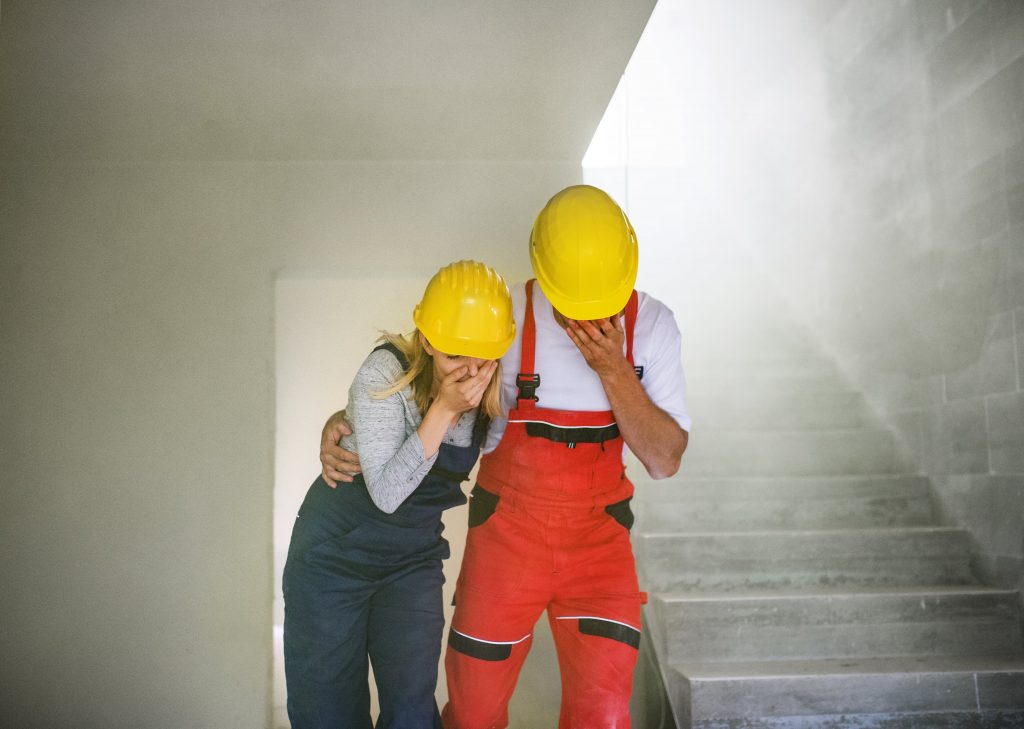First Aid For Suffocation – How to Help a Choking Person

Choking is an emergency that can happen at any time and could be life-threatening. It can happen while eating or just while swallowing. The immediate danger of choking is that the mouth can become blocked, which can quickly lead to serious problems, even death, if help is not given right away. So, it’s very important to know how to help someone who is choking because being ready to act quickly can save lives. This article will teach you effective first aid steps to handle choking situations, stressing how important it is to know these things. You can make a big difference in dangerous situations and make sure everyone is safer if you know and use these important methods.
Recognizing the Signs of Choking
Choking is a serious emergency that needs instant help, and knowing the warning signs is important for getting help right away. One of the clearest signs that someone is choking is that they can’t speak or make noise because their mouth is blocked. They might also act frantically by coughing or gagging as their body tries to get rid of the blockage. Another important sign of concern is the worldwide choking sign, in which a person grips their throat with one or both hands. If things get worse, the person may have trouble breathing and start coughing or gasping for air. Their skin may also start to turn blue, especially around their lips and fingernail beds, which is called cyanosis.
Telling the difference between light and serious choking is very important for figuring out what to do. If someone is only mildly choking, they may still be able to cough hard, which can help get the blockage out of the way. Most of the time, the best thing to do is to tell them to keep coughing while staying calm. If the choke is bad, though, the person won’t be able to cough, breathe, or speak, which means the mouth is totally blocked. In these situations, help needs to be given right away to keep the person from losing awareness and possibly hurting their brain. Quick action and using techniques like the Heimlich move or, for babies, back hits and chest thrusts can save their lives because they are meant to get rid of the object that is blocking their mouth. To save the life of someone who is choking, you must quickly assess how serious the situation is and act accordingly.
The Heimlich Maneuver: A Life-Saving Technique
The Heimlich method, which is also called belly thrusts, is an important first aid skill used to clear a person’s mouth who is awake. It is usually used when someone is choking and can’t speak, cough, or breathe properly, which means their whole mouth is blocked. This technique is different from those done on babies, and it needs to be done quickly to avoid major problems, like death from lack of air.
Someone must first be sure that the person is choking before they can do the Heimlich method on an adult or child over the age of one. Fully blocked airways are shown if the person can only nod and not speak, cough, or breathe. The first person to help should then stand behind the person and put their arms around their waist. They should make a fist with one hand and place it just above their belly with the thumb facing in. The other hand should grasp the fist, and the responder should perform quick, upward thrusts into the abdomen. This action creates an artificial cough, attempting to dislodge the object from the trachea. The procedure should be repeated until the obstruction is expelled or the person can breathe or cough forcefully.
In children, the technique remains largely the same, but care must be taken due to their smaller size. The responder should kneel behind the child to better position themselves for the thrusts and use less force than they would with an adult. It’s important to note that the Heimlich maneuver should not be used on infants under the age of one; instead, specialized techniques suitable for infants should be employed. In all cases, emergency services should be contacted immediately if the obstruction is not quickly resolved, as professional medical help is crucial.
What to Do if the Heimlich Maneuver Fails
If the Heimlich maneuver does not successfully dislodge the object causing the choking, it is crucial to call emergency services immediately for professional assistance. While waiting for help to arrive, it is important to remain calm and continue efforts to clear the airway. After attempting the Heimlich maneuver, the next step is to alternate between giving back blows and abdominal thrusts. For adults and children over a year old, stand behind the person, lean them slightly forward, and deliver five firm back blows between their shoulder blades using the heel of your hand. If the back blows don’t work, repeat the Heimlich maneuver, continuing to alternate between the two methods until the object is expelled or emergency personnel arrive.
For infants under the age of one, the Heimlich maneuver is not recommended. Instead, perform a combination of back blows and chest thrusts. Carefully position the infant face down along your forearm, ensuring their head is lower than their body. Support their head and neck, and deliver up to five gentle but firm back blows with the heel of your hand. If the back blows don’t clear the obstruction, turn the infant face up, supporting their head, and use two fingers to perform up to five quick chest thrusts on the lower part of the breastbone, just below the nipple line. Repeat this process as needed while awaiting professional medical help.
First Aid for Choking in Unconscious Victims
If a choking person becomes unconscious, it is crucial to act swiftly and efficiently to ensure their safety. First, gently lower the person to the ground while ensuring their head, neck, and back are supported. Immediately call for emergency medical help or instruct someone nearby to do so. Once the person is on the ground, begin by carefully checking their airway for any visible obstruction. If you can see an object blocking the airway and it is reachable, attempt to remove it with your fingers. However, avoid blindly sweeping your fingers in the mouth, as this could inadvertently push the object further into the airway.
If the obstruction is not visible or cannot be removed, initiate CPR (Cardiopulmonary Resuscitation) without delay. Begin with chest compressions by placing the heel of one hand on the center of the person’s chest, right between the nipples, and placing your other hand on top. Use your body weight to compress the chest hard and fast, at a rate of about 100 to 120 compressions per minute. After 30 compressions, deliver two rescue breaths by tilting the person’s head back slightly, lifting their chin, and pinching their nose shut. Seal your mouth over theirs, and provide two breaths, watching for the chest to rise. If the chest does not rise, reposition the head and try again, ensuring the airway is open. Continue the cycle of 30 chest compressions followed by two rescue breaths until the obstruction is removed or emergency personnel arrive and take over.
Throughout the process, it is imperative to remain calm and focused on maintaining a steady rhythm of compressions and breaths. Performing CPR helps circulate oxygenated blood to vital organs, reducing the risk of brain damage from hypoxia. Even if the person does not immediately respond, do not stop CPR unless you are physically unable to continue or trained medical professionals take over. Adhering to these procedures not only provides the best chance of survival for the unconscious choking person but also helps prevent further harm while awaiting medical assistance.
Conclusion
Knowing how to assist a choking person is a crucial life-saving skill, as choking can quickly become fatal if not addressed promptly. Acting quickly and calmly can make the difference between life and death, given that brain damage can occur within four to six minutes of oxygen deprivation. In such emergencies, it is vital to be vigilant and ensure that the correct techniques, like the Heimlich maneuver or back blows for those over 12 months old, are applied effectively. At the same time, it is essential to always call for professional medical assistance to ensure comprehensive care and safety, as these situations require immediate and efficient action to prevent severe consequences.







